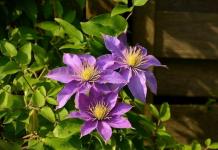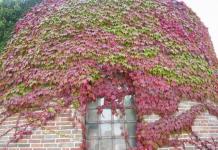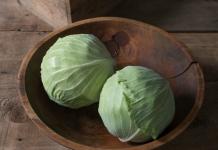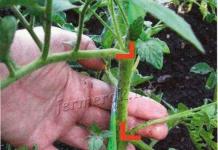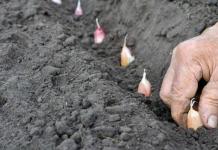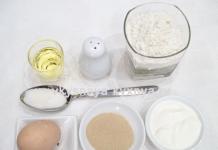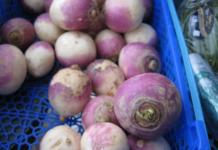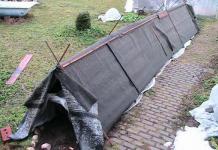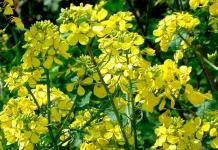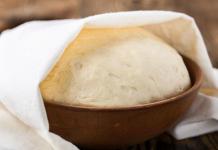Material prepared by: Nadezhda Zimina, gardener with 24 years of experience, process engineer
Using various agricultural techniques, you can achieve better results when cultivating your personal plot, while applying less effort. For example, having once applied the mulching technique for processing the soil surface, you can forget about watering, loosening and weeding for a long time. Plants will feel comfortable without additional maintenance. And decorative mulch, which is available in a huge assortment, will allow you to decorate the garden, place accents and fill the empty spaces of the beds.
Mulching technology
Before covering the ground with a protective layer of covering material, it must be prepared.
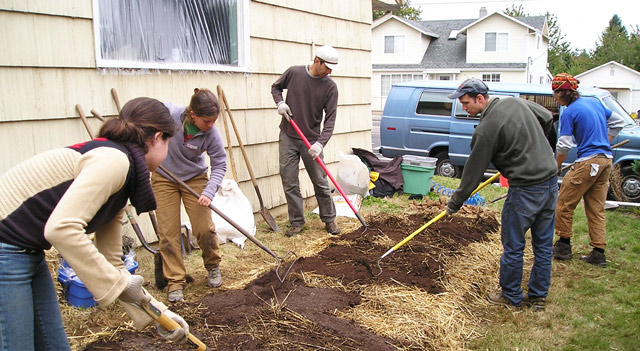
You need to do the following:
- Remove weeds from the entire area of the treated surface;
- Water the garden so that moisture remains in it, which we will preserve;
- Loosen the ground to a depth of at least 5 cm;
- Ventilate by slightly drying the top layer of the soil so that it does not sag and compact when mulching.
When to mulch?
Covering measures that promote long-term retention of moisture around flowers constantly growing in one place should be carried out in the spring, after the soil thaws and warms up well... If done earlier, when the soil is cold, the layer of mulch will prevent thawing by keeping the cold close to the roots. This can lead to the death of plants.
In the fall, they also cover the soil. Indeed, under the protective layer, the vital processes of soil organisms will continue much longer than in the environment, which will lead to additional production of organic matter from the covering substrate. In the fall, it is possible to plant various cultivated plants under mulch, for example. He winters well under a shelter of pine sawdust, which, among other things, also protect him from diseases and pests.
Many garden vines also need autumn shelter, otherwise they do not survive the winter, freezing at the root. For successful protection from the cold over climbing roses, actinidia, clematis, they build a dry shelter with their own hands. It is simply impossible to cover them with sawdust - during thaws, the water will wet the covering substrate, and with a significant decrease in temperature, it will turn into an ice shell, under which plants can die.
For the construction of a reliable shelter, wooden frames or boxes are used, under which whips and vines are placed, they will be in a dry air environment. Then the protective structures are covered with a “blanket” of sawdust. But this is not enough, since wood shavings do not protect the plants from excess moisture in any way. On top, you need to make another layer to prevent it from entering. To do this, use a mulching film.
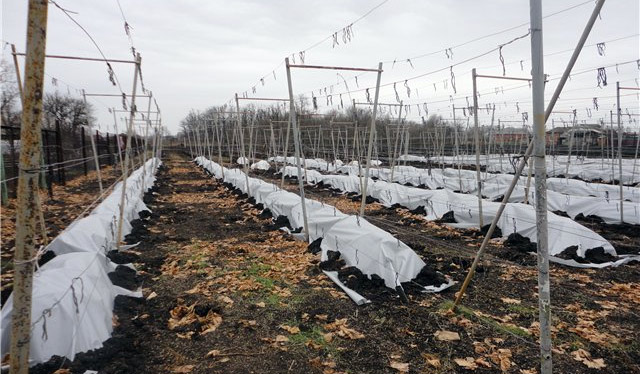
winter shelters for grapes
The quality of covering measures largely depends on the material used. Each has its own advantages and disadvantages, which can help or harm specific plants. For the correct choice, it is necessary to have information on the properties of protective materials.
Mulching with green plant residues
Siderata
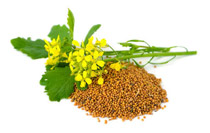 For spring soil mulching, there is an original, and very economical method that allows you to grow healthy seedlings right in the soil. Of course, we are not talking about tomatoes and peppers (although you can try in the southern regions). First of all, in this way you can plant zucchini, eggplants, and pumpkins.
For spring soil mulching, there is an original, and very economical method that allows you to grow healthy seedlings right in the soil. Of course, we are not talking about tomatoes and peppers (although you can try in the southern regions). First of all, in this way you can plant zucchini, eggplants, and pumpkins.
In the spring, as soon as the ground thaws, they dig it up, and sow green manure, rye is best suited. When the soil warms up well and constant positive temperatures are established, you can start planting seeds of cultivated plants. Rye will serve as a natural defense, shading young shoots at the initial stage, creating comfortable conditions for them to develop. When the cucumbers and zucchini grow up, the cereals around are removed and the ground is covered with straw. It serves as a good mulching material, while simultaneously feeding the soil with nitrogenous compounds.
It must be remembered that green manure cannot be used immediately after removal from the soil. They must be dried within 24 hours, otherwise the straw will smell bad and rot, as a result of which pathogenic microflora and fungi may appear on it.
Cut grass
Weeding or mowing the lawn leaves a lot of grass. Throwing it away is irrational, therefore, this type of plant waste has two ways of implementation. The first is to put them in compost. The second is to organize mulching of beds, flower beds and tree trunks of fruit trees with grass.
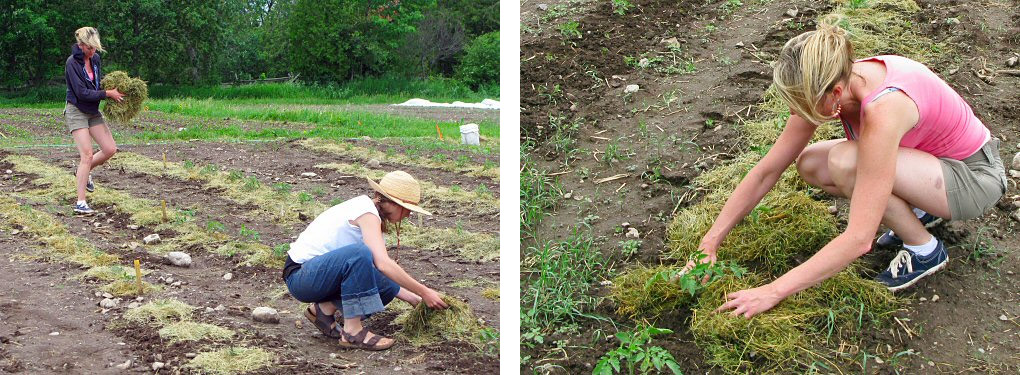
You can also throw the weeded potatoes with the mown grass instead of hilling. The tubers will thrive in a loose layer of semi-rotten substrate, and in the fall the potatoes can be easily removed by pulling out the bushes by the tops.
But melons, cucumbers and cabbage cannot be mulched with grass, as they can become infected with rot or fungus. For the winter, fresh grass mulch does not need to be left, as pests can grow in it. It is best to use crop residues a second time by composting them. Well-dried hay is used as a covering material before winter, which is used to cover tree trunks just before frost.
Video: an example of mulching tomatoes with plant residues
Sawdust mulching
The main function of mulching is the ability to create comfortable conditions for plants. Using materials from organic matter, you can significantly increase soil fertility, reduce the number of watering and loosening, and get rid of weeds.

Mulching is one of the most common types of shelter. They are especially often used for. Strawberries and garden strawberries winter well under a warm blanket of large shavings and do not get sick with various types of rot. Pathogenic flora is the very negative factor that significantly affects the harvest. But when using sawdust, which acts as a sorbent, a significant part of the berries calmly sings on the bushes, and does not rot, since it does not come into contact with damp ground.
Strawberry mulching technology is simple and effective:
Before adding sawdust, the bed is weeded, loosened and watered. After the formation of a light crust on the upper layer of the earth, they begin the main work. To do this, take cardboard (it is better not to use a newspaper, since the ink for printing contains lead), and cover the space between the rows with them. Sawdust is poured on top of the cardboard. That's it, the work is over. By the way, this method protects not only from the appearance of weeds, but also from excessive growth of the strawberries themselves.
Mulching with hay and straw
These natural materials, which are easy to find in any village, summer residents began to use for planting using a new technology, for the use of which it is necessary to stock up on cardboard (you can ask for boxes in the nearest store), planting material and dry grass.
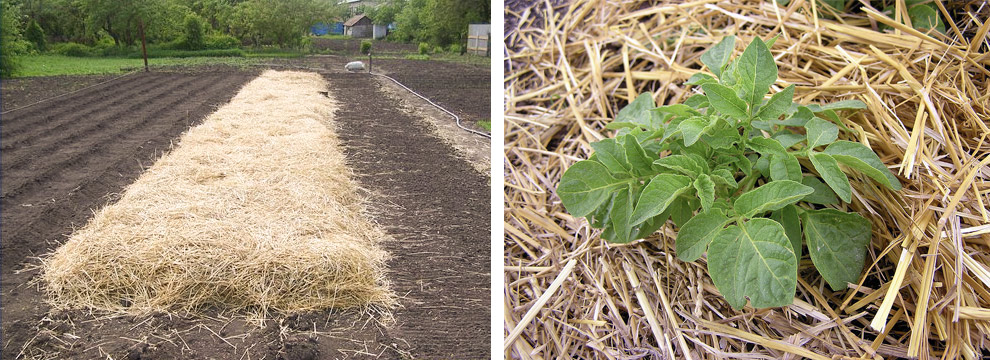
The process itself can be broken down into several stages:
- Covering the ground with cardboard. It can be laid directly on overwintered grass as soon as the snow melts. The point of this action is to prevent light from reaching the weeds, which will die along with the roots within a few weeks.
- Germination and disinfection of potatoes. You can disinfect with a solution of any ready-made biostimulant, and germinate in the sun, greening the tuber. These preparatory procedures have a healing effect so that later potatoes under mulch do not get sick with late blight.
- The next stage is planting planting material. To do this, holes are made in cardboard sheets, whose radius should be twice as large as the radius of the tubers. After that, the seed potatoes are placed directly on the ground, sprouts up, so that they rush into the sunlight.
- The final stage of planting is to mulch the entire row with straw. To do this, dry residues of cereal crops are poured directly on top of the cardboard, with a layer of at least 15-20 cm. Some people use hay for shelter, but it has a significant drawback - it is a carrier and accumulator of weed seeds.
This method, which is revolutionary for the consciousness of many gardeners, has many advantages. First, it is minimal in terms of labor costs. Imagine, you do not have to plow, weed and huddle plantings. Potatoes under mulch grow well without unnecessary interference. An exception is drought, when you have to water your plantings a couple of times. And still, the amount of physical labor used is incomparable with the traditional method of planting.
Harvesting potatoes that have grown under thatch shelter is also an easy walk compared to traditional digging. This is a pretty clean job, since getting to the tubers is very easy - you just need to move the straw apart and harvest.
After harvesting, the beds are left without digging. They are already natural compost, which will calmly rot in the time remaining before the onset of winter cold weather, and next year these beds can be used for planting without additional processing. Using the straw mulching method, you can achieve a significant improvement in soil fertility on the site in 2-3 years.
Video: comparison of the crop of potatoes when mulching different types
Mulching with textiles and foil
This type of protective procedure is used in two cases:
- The first one is during the construction of "dry blankets" for the winter for various ornamental plants and lianas, which has already been described above.
- The second type of use is to protect the beds from weeds and moisture evaporation.
A prerequisite for using roll covering materials is compliance with all preparatory procedures (weeding, moistening, loosening), before covering the beds with polyethylene. When using this method in the summer, only transparent film and agrotextile are used. But the black film is used before planting. It has too strong a depressing effect on any plant flora, therefore, even with partial perforation, it is not suitable for summer use.

mulching with agrotextile (left) and film (right)
The film is spread on the beds at the end of March, when it is already warm enough and weeds begin to grow. Within 3-4 weeks, they all die under a black film, and their roots, which die off naturally, can be easily removed with a rake.
Agrotextile is very often used for mulching strawberries. Usually they take non-woven densely, which allows moisture to pass through. It is spread over all surfaces of the garden, cutting out circles at an equal distance for berry bushes. When using this method, strawberries bear fruit perfectly throughout the season, and practically does not require additional maintenance.
Peat mulching
This fertilizer from the swamp is very often used as a mulch layer for the soil, when planting various plants. serves as an excellent protection against weathering and leaching of fertile components from the soil, and does not allow the growth and development of pathogenic flora. After the end of the season, this substrate is left in the beds, and it gradually passes into the soil, improving its composition.
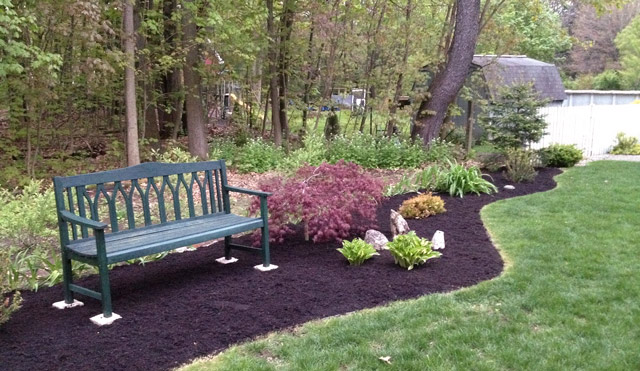
decorative use of peat
The homogeneous structure of peat allows it to be used as a decorative backfill. Also, peat is used in the garden, for mulching various crops that require increased care, for example, tomatoes. Under nightshades, this substrate is applied when they are well rooted, a couple of weeks after planting the seedlings in the ground.
Peat is ideal for mulching. It creates optimal conditions for the growth and development of this moisture-loving shrub. The soil constantly retains moisture and becomes loose, which allows the raspberry root system to develop well.
Mulching with bark and wood chips
Every year this way of caring for the garden gains new fans. Bark mulch is commonly used for walkways and large outdoor areas. In our climatic zone, pine bark is the most widespread. This material for landscape design has a number of useful properties.
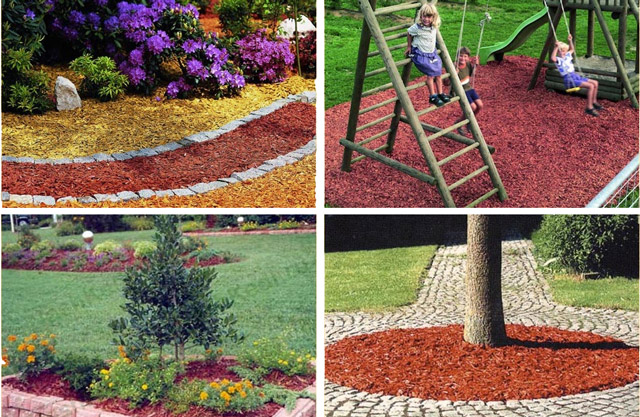
decorative mulch from bark and wood chips
Decorative bark mulch stays in one place for a long time unchanged, perfectly protects the soil from weeds, and saves from the sun on hot days. Also, it does not compact for a long time due to its porous structure and relief surface.
Pine bark
This type of covering material is very popular throughout the country. The advantages of pine bark are its lightness, thickness and high content of fungicides, which suppress harmful microflora and prevent the appearance of pests.
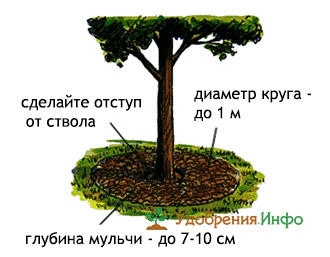
Features of mulching with bark / chips of tree trunk circles
Mulching bark has been used for centuries. This type of protection has become especially popular for those who constantly need comfortable conditions. The bark retains moisture for the root system, and perfectly decorates the trunk circle, which saves time when caring for these capricious flowers. It also serves as a winter shelter from freezing.
Wood chips
When buying this material, you should pay attention to the number that is indicated on the package. It corresponds to the size of the chips, and indicates the dimensional indicators of the product. Chips are small (5-8 cm), medium (8-15 cm), and large (more than 15 cm). It is advisable to purchase this covering material from manufacturers who guarantee the minimum inclusion of chip dust in the composition. This property helps to protect the beds from oxidation.
Mulching chips serve the same function as other materials. It keeps the soil moist and loose, stimulates the development of beneficial microflora, naturally forms humus. In addition to all of the above advantages, this material is perfect for decorating a site.
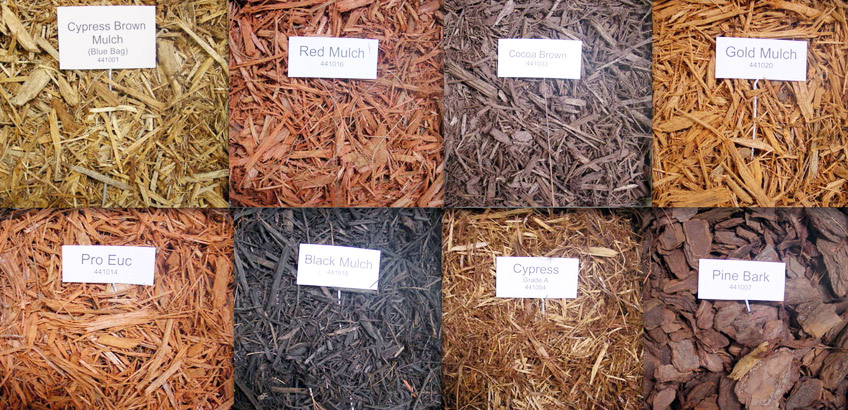
decorative mulch options - based on wood chips and bark
Decorative mulch can be of any color and size. It is used in young flower beds, or in beddings, made in a minimalist style. It is resistant to external influences, so you can fill up flower beds and garden paths with it.
Precautionary measures
The choice of wood chips must be approached more carefully than the purchase of other materials. When buying it, it is desirable ... to smell it! If the substrate emits an acidic vinegar smell, then it is better to postpone the purchase. Most likely, the wet chips were stored without oxygen, and decay products, very harmful to plants, began to be produced in it.
But, if the acquisition has already been made, the situation can be corrected. Chips need to be dried well. Once the sour smell is gone, you can use it to mulch the soil.
Unusual types of mulch
Leaves
They are used everywhere, this is the most affordable covering material that serves to protect plantings with perennial flowers and overwintering bulbs.
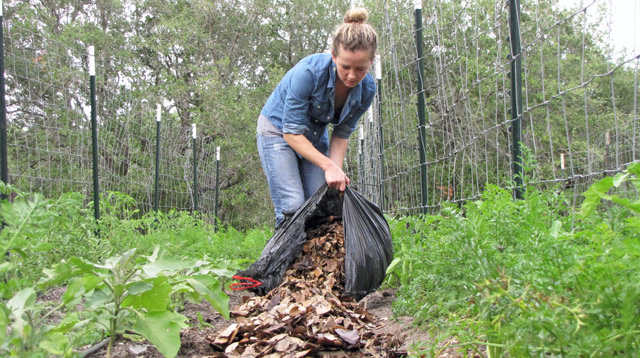
Pine needles
Needles are mulched on plants that are susceptible to massive attacks of pests, for example, garlic.
Eggshell
This species is used as an obstacle in the path of slugs, scattering the shell in a thin layer around the rose bushes.
Using various materials at hand for mulching the beds, you can greatly simplify your life. Protected plant roots make full use of all the moisture introduced into the soil, which provides them with excellent nutrition. The need for constant watering disappears, as well as for constant loosening. Mulching the soil will help put the garden and vegetable garden in order, and free up time to finally straighten up and admire the beauty and order created by your own hands.


